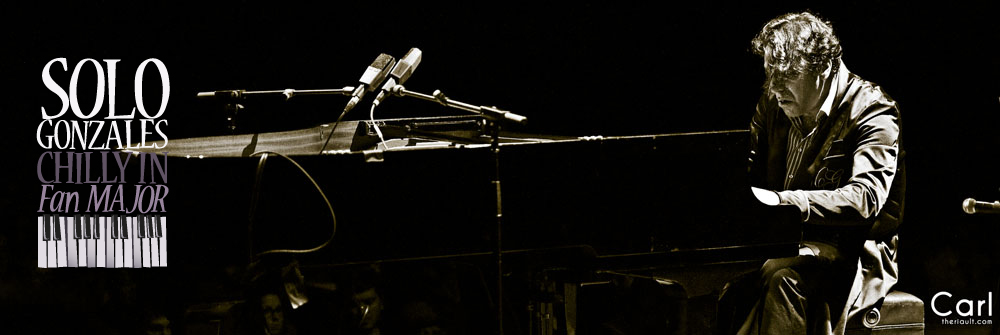 It would appear that the most successful and prolific authors, filmmakers, and musicians have all been able to master one key aspect within their respective fields of expertise: the mastery of emotions. Their ability to make people fearful, cheerful, inspired, melancholy, and so on, reflects years of experience, trial-and-error, or (in some cases) sheer luck. Authors and filmmakers have the advantage of using or creating emotional states though mental or physical images – no easy feat unto itself, but certainly much easier than evoking the same emotional power without using any words or mental images at all.
It would appear that the most successful and prolific authors, filmmakers, and musicians have all been able to master one key aspect within their respective fields of expertise: the mastery of emotions. Their ability to make people fearful, cheerful, inspired, melancholy, and so on, reflects years of experience, trial-and-error, or (in some cases) sheer luck. Authors and filmmakers have the advantage of using or creating emotional states though mental or physical images – no easy feat unto itself, but certainly much easier than evoking the same emotional power without using any words or mental images at all.
When listening to Gonzales’ music, you’ll quickly discover that one of his goals is to compose music that evokes a wide range of emotions within listeners; laughter, fear, melancholy, and so on. His ultimate achievement appears to be the ability to make the hairs on the back of one’s neck or arms stand on end – “chills” or “thrills” as they are commonly known. In interviews, Gonzales cites that he has studied the emotional power and mathematical relationships between harmonies and chord sequences, which he can use to select which emotions he wants to impart to the listener. Mathematics aside, we’ve all experienced the deep emotional impact of music, but how can something as benign as sound pressure waves elicit an emotional response? The answer (like most things) lies in history.
All living things have a desire to survive and procreate, and to see that their procreations are also able to procreate; those fundamental aspects of life have to apply to every living thing, otherwise they wouldn’t be around for you to see. Humans and many other mammals have the advantage of our senses to help keep us and our offspring out of danger, and regardless of our situation, we continually rely on our senses for our well-being. Long ago, the ability for animals to pick up and interpret vibrations in air must have been advantageous over other animals that could not. If you could hear your enemies approaching (and from what direction), you stood a better chance of survival. What does all of this have to do with chills in music? That’s coming up.
About 20 years ago, Jaak Panksepp, a research scientist from Estonia working at the University of California, was fascinated with human and animal emotions. His goal was to research the physical, evolutionarily, and neurological basis for emotional response in humans and animals. In one set of experiments, he specifically devised a set of experiments that would consistently elicit a “chill” response in subjects (humans) using music alone. He then systematically analyzed the passages of music that the subjects consistently reported as evoking “chills” (he called the response a “skin orgasm”), and was startled at what he found. Chills are evoked more strongly from “melancholy” or perceived “sad” music than music perceived as “happy” (typically major vs. minor music), and that the emotional response was almost twice as strong in women as in men. He also discovered that the frequency of the music during emotional passages almost exactly aligned with what is known as a “separation call”.
A “separation call” in mammals is a cry elicited by a baby when separated from its parents. The cry in humans was previously analyzed to have a fundamental frequency of around 500 Hz, with successive harmonics up to 4500 Hz. Dr. Panksepp discovered that the acoustic property of emotionally chilling music and its resonant formants followed this pattern of frequencies quite closely. The same “chill” response could readily be elicited in human subjects by playing infant separation cries alone. Furthermore, Dr. Panksepp hypothesized that the actual “chill” response (hairs standing on end and feeling cold), was a physical cue to the parent to seek out the lost infant and hold them close. In short, humans (especially mothers) who responded to the “chill” response of their children’s separation calls were more likely to survive and produce offspring than those who did not heed the call. In addition to “chill” response, nursing mothers may also experience a “milk letdown” when exposed to the separation cries of an infant. This is obviously another physical cue to the mother to find their child. It remains to be seen if the emotional power of Gonzales’ music is sufficient to cause nursing mothers to leak breastmilk.
The emotional power of “chills” was also observed to activate the opioid or addictive systems of the brain. In short, we tend to become addicted to the feeling of chills, and will become more attached to the music of performers that we love. If we have in a sense “bonded” with the emotional power of music, then more music along the same lines will more easily evoke a similar response (hence the power of Solo Piano II).
Furthermore, Dr. Panksepp found that the most profound forms of happiness ultimately arose from people working through the experience of sorrow. His conjecture is that profound happiness arises from the interplay of polar dualities within the higher brain dynamics of human emotion. In other words, happiness after sorrow seems far happier than happiness after a “normal” state. Gonzales’ mixing of comedic events after deep emotional music affects the listener greatly, and nowhere is this more apparent than in his live performances.
Does Gonzales’ melancholy music indirectly take advantage of our autonomic, evolutionarily responses to the cries of lost children? Has he discovered the mathematical formula that cleverly mimics an infant’s “separation call” via harmonies? Based on the evidence, the answer is a resounding yes. Gonzales, like other experts in their respective crafts, is able to tap into our emotions; the evocation “skin orgasms” is but one effective tool in his musical arsenal. If an entertainer such as Gonzales is able to effectively and strongly bond with their audience, then the audience (in turn) will be more strongly motivated to seek similar music from that entertainer.
Gonzales has other musical “weapons” such as fear and laughter at his disposal, and he uses those to full effect as well. Dr. Panksepp has many fascinating research papers on the emotional power of other sounds, including the elicitation of fear and laughter, but examination of those emotions will have to wait for another blog post. In the meantime, have another listen to Solo Piano II and note where the chills, fear and laughter come into play. I think you’ll be surprised at how much emotional power a musical genius can evoke from a single instrument.
